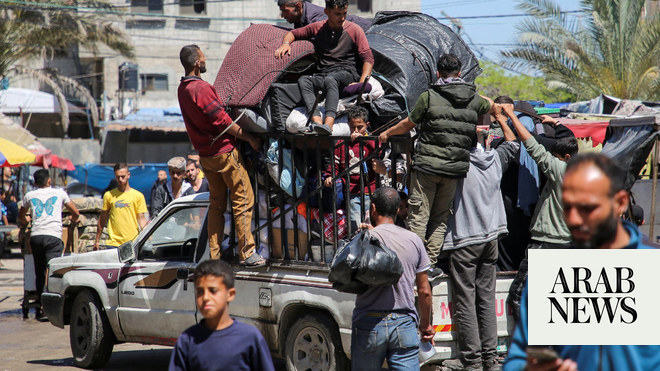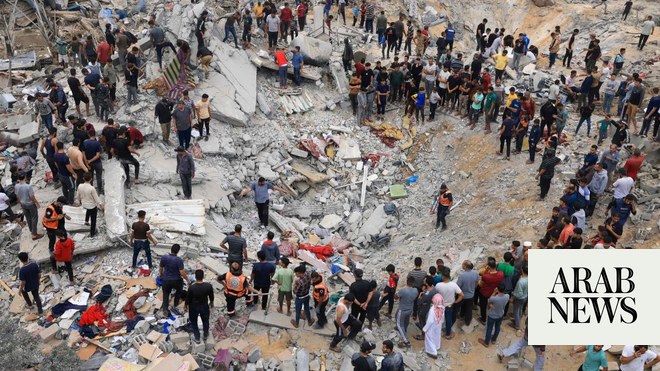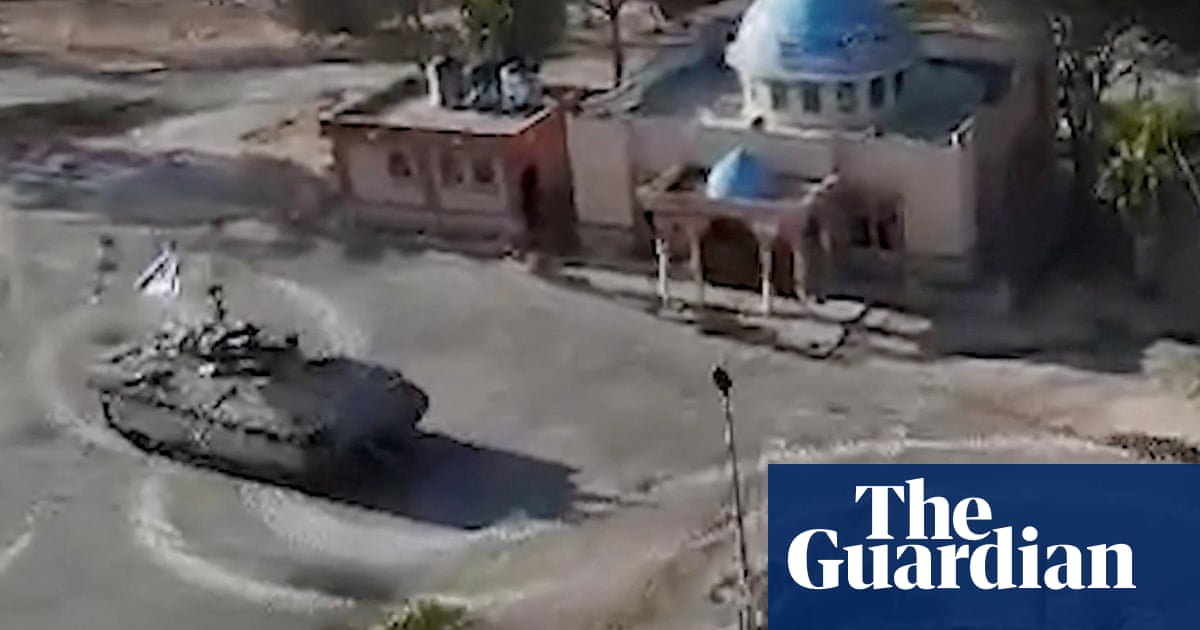
Thirty-seven sick and injured children left Gaza for treatment on Saturday through the newly reopened Rafah crossing, as three male Israeli hostages returned home and 183 Palestinian detainees and prisoners were released, mostly to Gaza and the West Bank.
The Rafah border crossing into Egypt closed when Israeli forces moved into the surrounding area nine months ago. It was unsealed under the Gaza ceasefire deal after all Israeli women held alive in the strip were released.
It is a vital conduit to Gaza – the only crossing that does not connect to Israel – and its closure caused international outcry for trapping the vast majority of urgent medical cases inside Gaza. It also made aid delivery more complicated and expensive.
The resumption of regular crossings, for a set number of patients with urgent medical needs, marks a significant moment in the complex ceasefire agreement.
Fifty children were meant to leave on Saturday but two died before they could be evacuated, some were critically ill and could not be moved under the current conditions, and doctors had lost contact with some families, said Zaher al-Wahidi, head of the Palestinian Information Center at the Gaza health minister.
Even the current quota of 50 a day was far too low to meet desperate needs inside Gaza, he added.
Last week the UN secretary general, António Guterres, called for 2,500 children to be immediately evacuated from Gaza for medical treatment after meeting US doctors who said the children were at imminent risk of death in the coming weeks.
The handover of the three Israeli hostages, Yarden Bibas, 35, Israeli-US citizen Keith Siegel, 65, and Israeli-French citizen Ofer Kalederon, 54, triggered the release of 183 Palestinian prisoners and detainees from Gaza held in Israeli jails.
They included a prominent political prisoner and more than 100 people from Gaza detained after the 7 October attacks and never charged or tried, but also 72 people serving long or life sentences for violent offences.
An aid worker, Mohammad al-Halabi, who Amnesty International deemed a prisoner of conscience, was returned to Gaza for the first time in nearly a decade. He was detained in 2016, held without trial for more than six years, then convicted in what the rights group described as “deeply flawed proceedings”.
The handover of the Israeli hostages in two locations – the southern city of Khan Younis and at Gaza City’s port – was far more orderly than a chaotic release earlier this week that briefly threatened to upset the terms of the ceasefire deal.
Inside Israel, joy at welcoming back Bibas was mixed with fear about the fate of his wife, Shiri, and young children Ariel and Kfir, who were seized and held hostage separately from Yarden.
Video of Shiri holding on to her children as she was kidnapped by Hamas gunmen from the Nir Oz kibbutz became an enduring image of the 7 October 2023 attacks. Her son, Kfir, was just nine months old when he was abducted.
They are listed among 16 Israelis still due to be returned in the first phase of the ceasefire, eight of whom are known to dead. Because living women were prioritised for return and Hamas is now releasing male hostages, many in Israel say hopes the family will be reunited alive are fading.
The Israeli government has expressed “grave concerns” for their wellbeing. Hamas said the trio, kidnapped separately from Yarden, were killed in 2023.
Seventeen of the 33 Israeli hostages due for release in the first stage of the ceasefire have now been released in exchange for 400 Palestinian prisoners and detainees.
Saturday marked the first time detainees were returned to Gaza; the deal includes the release of 1,000 Palestinians from the strip. Buses carrying 111 of them were greeted by joyful crowds in Khan Younis.
Some of the detainees were led out of prison with their hands handcuffed over their heads, wearing a bracelet inscribed with a threatening message, prompting outrage among International Committee of the Red Cross (ICRC) employees coordinating the release, the Israeli newspaper Haaretz reported.
The bracelets read: “The eternal nation does not forget, I will chase down my enemies and defeat them”. The ICRC later reminded both parties to the deal “of their responsibility to ensure transfers are carried out safely and with dignity”.
The truce, which began on 19 January, is aimed at winding down the deadliest and most destructive war ever fought between Israel and the Hamas militant group. The fragile deal has held for nearly two weeks, halting the fighting and allowing for increased aid to flow into the tiny coastal territory.
The Rafah crossing, long a lifeline for Palestinians, had been closed since Israeli forces took control of the surrounding area in May 2024. The first crossings this year took place after buses were seen collecting the sick and wounded from Gaza hospitals.
Over the past 15 months, Israel’s campaign against Hamas in retaliation for the militants’ 7 October 2023 attack on southern Israel has devastated Gaza’s health sector, leaving most of its hospitals out of operation, even as more than 110,000 Palestinians were wounded by Israel’s bombardment and ground offensives, according to the Palestinian health ministry.
In addition to injured people leaving, with a quota set to include Hamas fighters, the crossing could allow aid groups to boost supplies into the strip.
Negotiations are due to start by Tuesday on agreements for the release of more than 60 remaining hostages and the withdrawal of Israeli troops from Gaza in a second phase of the deal.
After the latest releases, Israel and Hamas are due to begin negotiating a second phase of the ceasefire next week, which calls for releasing the remaining hostages and extending the truce indefinitely. However, the war could resume in early March if an agreement is not reached.










